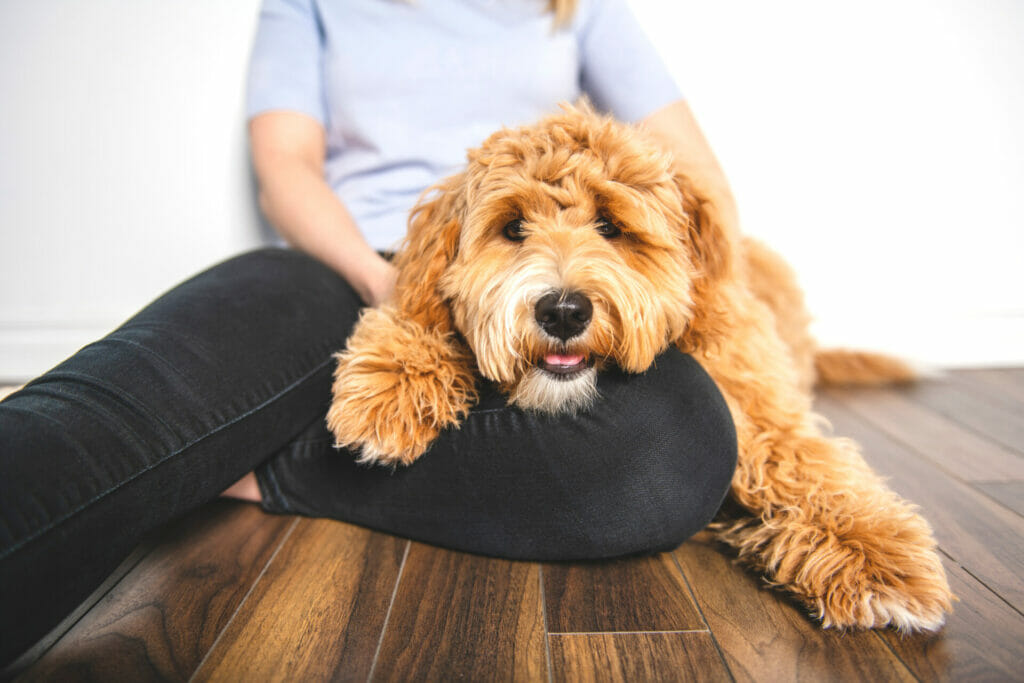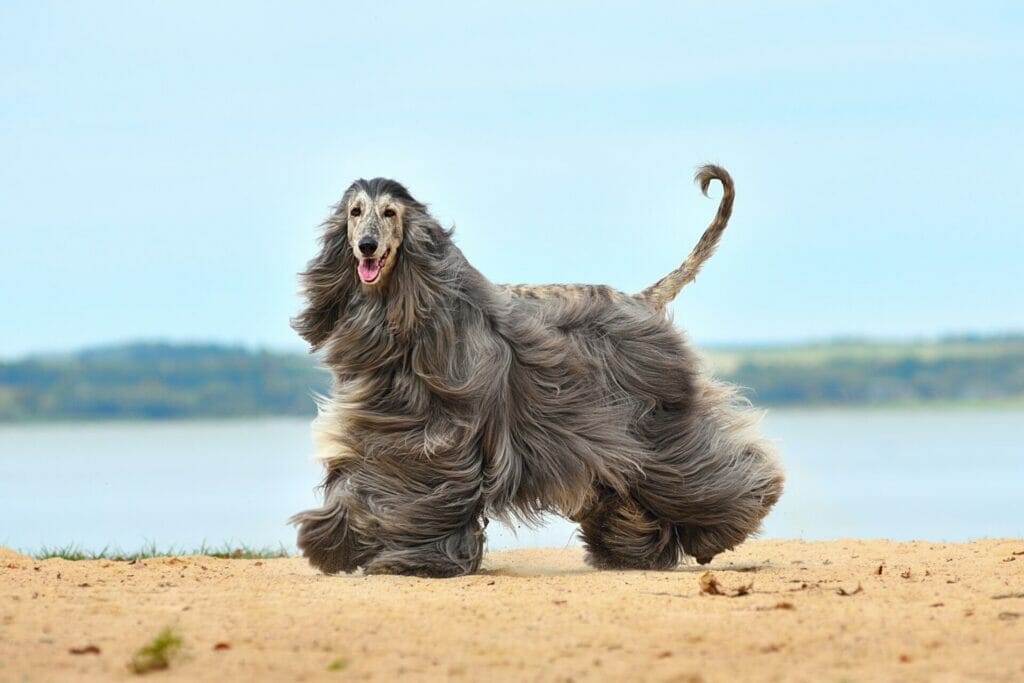They’re very high in demand: doodles, poodles, and beyond. They’re labeled as non-shedding and hypoallergenic, But do hypoallergenic dogs exist? In recent years, several breeds have gained the “hypoallergenic” label. If you become congested or sneeze anytime you’re near a dog, you’re not alone. Almost 10 million people in the US, and about 20% of the world population, are allergic to their pets, so it’s no surprise that this label has grown in popularity, and people are looking for the best hypoallergenic dogs. But, if you allergy sufferers have been pinning all your hopes on one of these dogs being the perfect solution, don’t get too excited—this term is not as accurate as it sounds.

Unfortunately, True Hypoallergenic Dog Breeds Don’t Exist
Although some individual dogs that don’t shed may elicit fewer allergy symptoms than others, studies suggest that no specific hypoallergenic breed can genuinely be considered a hypoallergenic dog breed.
Somewhere along the line, the fact that a dog didn’t shed became synonymous with hypoallergenic. While some people can be allergic to dog hair, others may be allergic to the dander (skin cells) and
saliva.
People with allergies tend to gravitate toward dogs that don’t shed. Even mild allergy sufferers or those with pet sensitivity believe dogs that don’t shed will emit less dander. But let’s dive into that science a bit more.
The Science Behind “Hypoallergenic Dogs”
In 2011 the American Journal of Rhinology and Allergy published a study that found no major differences in the levels of the primary dog allergen, Canis familiaris (Can f 1), in homes with dogs labeled as hypoallergenic compared with those that weren’t. While the study authors state that there is a need for more research to confirm these findings, the results threw a wrench in most allergy sufferers’ plans.
The results of a further study in 2012 found that low-shedding Poodles had some of the highest levels of Can f 1 present in their coat samples. Surprisingly, Labradors Retrievers, often regarded as a breed more likely to trigger allergies because of their excessive shedding, had significantly lower allergen levels. This study also found no major difference in the amount of Can f 1 found in the air of homes with “hypoallergenic” and other dog breeds.
How Pet Allergies Work
Most people are not actually allergic to dog hair. Instead, they’re allergic to dog dander (flakes on the dog’s skin) or saliva. Hair does have something to do with it, though: Sometimes other indoor allergens like dust, or outdoor allergens like grass or tree pollen, can build up on a dog’s furry coat and trigger allergy symptoms like sneezing, congestion, nasal swelling, asthma, and rashes. Many people with dog allergies complain about red, itchy eyes.
People can develop allergic reactions to pet dander (like dandruff in humans), saliva, urine, and hair. When exposed to these substances, our body can mistakenly see certain proteins within them, called allergens, as a threat. To protect us, our body develops antibodies against those proteins.
When we’re exposed to those proteins again, we then have an allergic response. Our immune system will be activated, causing the release of histamine. Histamine causes symptoms, such as sneezing and increased mucus production, which protect us from the invading protein. These symptoms are what cause the discomfort we associate with an allergy.
You could develop symptoms such as itchy eyes, runny nose, asthma attacks, sneezing, and/or congestion. You might also develop hives if a dog touches or licks you.
What Is a “Hypoallergenic” Dog?
Basically, there’s no such thing as a hypoallergenic dog because all dogs produce the same proteins. It’s those proteins to which you’re reacting. That’s why even a so-called “hypoallergenic” dog can still trigger an allergic reaction. It would be more appropriate to call these shedding versus non-shedding dogs. Shedding dogs release more hair into their environment, leading to a buildup of hair in your home. Non-shedding dogs tend not to shed their hair as easily. They must be regularly groomed to prevent matting.
When dogs shed, some people can develop an irritant response to the hair. While the symptoms can be the same, an irritant response differs from an allergic response. Irritation doesn’t trigger the production of antibodies the way an allergy does. If you experience an irritant response to hair, having a dog that sheds less would reduce this. Being vigilant about keeping loose hair cleaned up would also help those who are experiencing an irritant response and pet allergy.
Popular dog breeds that have been labeled as the best hypoallergenic dogs include:
- Poodle
- Bichon Frise
- Maltese
- Afghan Hound
- Labradoodle
- Goldendoodle
- Shih tzu
- Schnauzer
- Soft-Coated Wheaten Terrier
- Portuguese Water Dog
- Bedlington Terrier
- Chinese Crested
- Irish Water Spaniel
- Hairless dogs
These dogs are commonly marketed as the best hypoallergenic dog breeds because they don’t shed or shed little to no fur compared to other dog breeds. In theory, this would also mean they would leave less dander containing Can f 1, triggering fewer allergy symptoms, especially in mild allergy sufferers.
Dogs with a curly coat, a silky hair coat, a wiry coat, a short coat, or a tightly curled coat are often seen as great hypoallergenic dogs. On the other hand, a dog breed with a double coat, dense coat, or all that fur, like a golden retriever, would generally be classified as one that would give you allergies.
If you already have a dog, here are a few tips to prevent allergies:
- Have accessible outdoor space. It may take weeks or months before your house is free of pet allergens, but more outside time for your dog will help.
- Keep your dog clean and bathe them regularly in warm water and a good shed-controlling shampoo. This may reduce the amount of dog dander and saliva deposited throughout your home.
- Most dog owners also forget to wash their hands after touching their own dogs. Washing your hands when playing with your dog or other dogs is very important.
- Get a groomer to bathe your dog so you’re not exposed to the allergens.
- Regular brushing is important to remove excess hair and dead skin cells, no matter what dog breed.
- Wash your dog’s bedding weekly to remove excess dander and hair.
- Keep your dog out of the bedroom and off the bed during sleep.
- Get allergy shots if you are an allergy sufferer.
Conclusion
To tell the sad truth, the only way to prevent dog allergy symptoms entirely is to not live with a dog in your home. Hypoallergenic dogs were initially marketed for people with allergies because they shed less and were thought to leave behind fewer allergens and pet hair.
Unfortunately, there is no scientific evidence to back up these claims. In fact, research shows that so-called hypoallergenic breeds may produce equal amounts of allergens, if not more in some cases. But dog lovers, do not let this deter you from seeking a canine companion. Just because a true hypoallergenic coat does not exist, it doesn’t mean that you cannot enjoy adorable dogs.




















